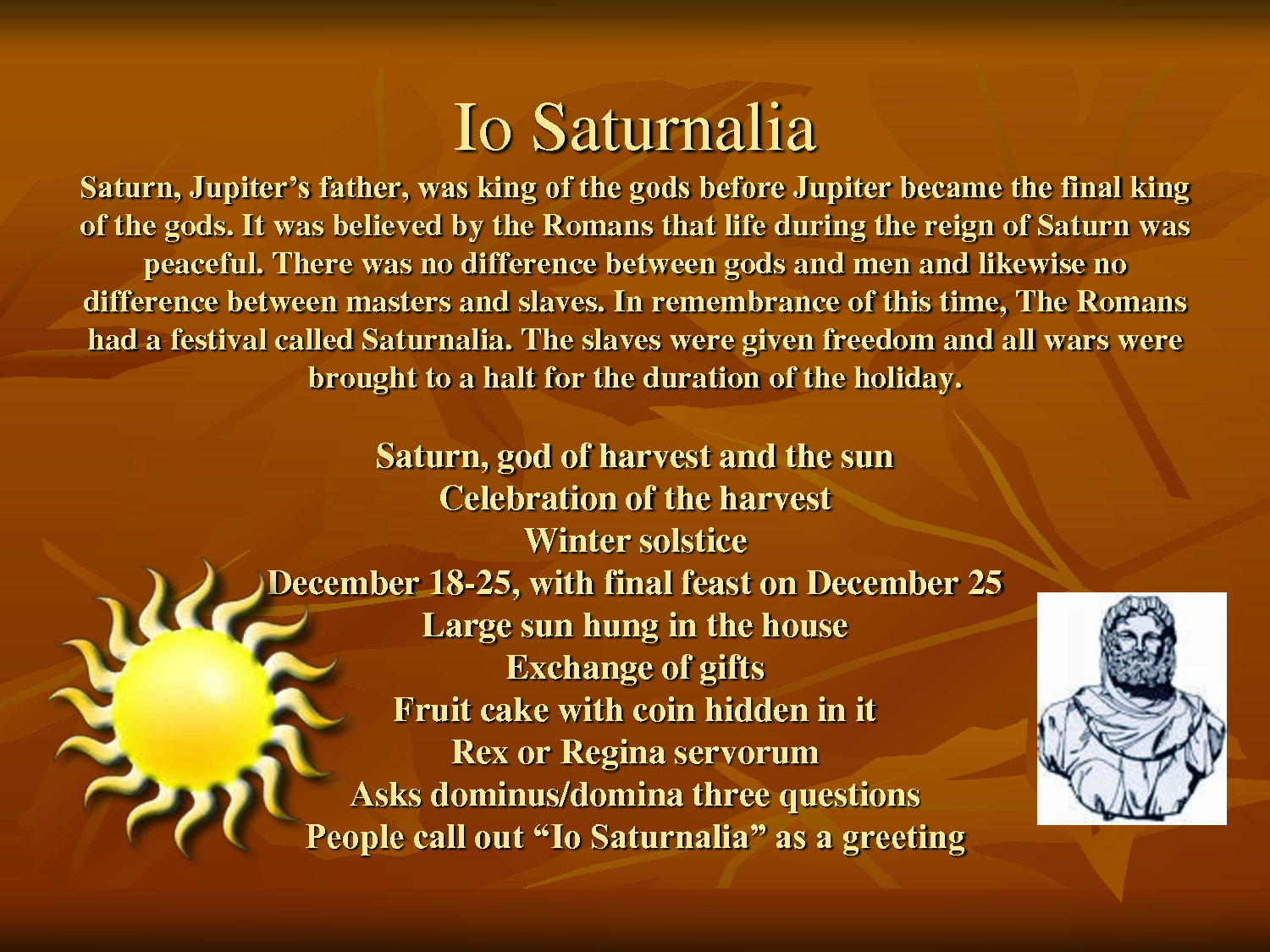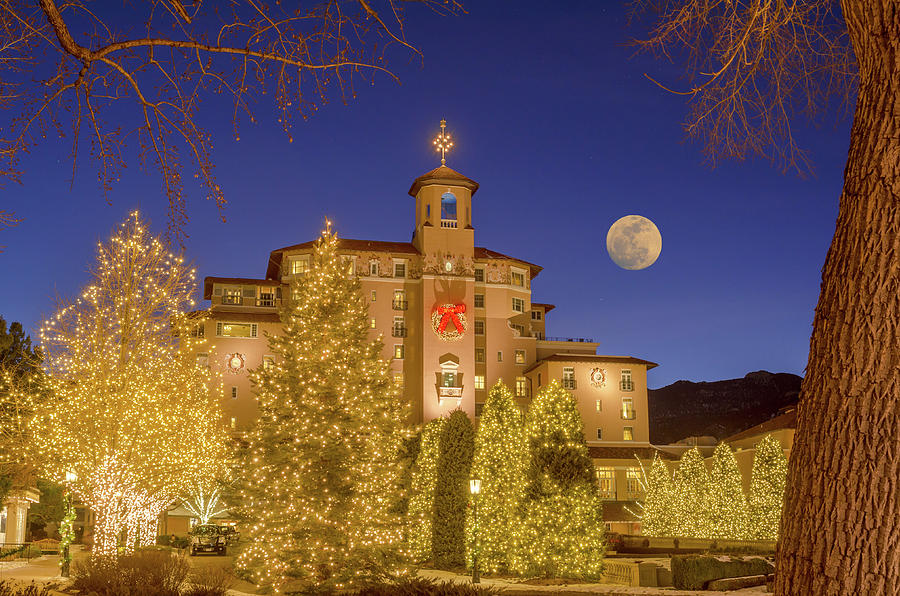

Pileus, a freeman’s hat was worn by everyone, some customs that would be recognised today.Īlso around the time of Saturnalia, December 25th the upper classes celebrated the birthday of Mithras. The Io pronounced “yo” (The Latin related to “ho” as in “Ho, praise to Saturn”). It had other traditions, the common greeting was “Io, Saturnalia!”. The most common gift was cerei (wax candles) and as with modern Germany, there were specialist markets called sigillaria.

For other Romans, no business was carried out, less formal clothing was worn, it was a school holiday and small gifts were given out, known as ‘saturnalia et sigillaricia’. The slaves were even exempt from any form of punishment. The slaves were permitted to gamble, were treated as equals, worn their master’s clothes and even served upon at meal times.

It was a festival where the social order was in affect inverted. The festival was a period of partying, tomfoolery and in the houses a family member would be appointed the Lord of Misrule. Saturnalia was a time for hedonistic festivities. Although both Augustus and Caligula tried to shorten the holiday season, their attempts were unsuccessful. Originally it had been on the one day but due to its popularity, the festivities later continued onto the 23rd December. Saturnalia was officially celebrated on the 17th December. The celebrations were based around the Winter Solstice. Saturn the god of agriculture would have been like the celebration of the Norse in Scandinavia. It is believed to have been introduced initially, as a moral boaster, following a military defeat but soon became the festival for Saturn. It originally took place between 220 to 210BC. The Romans had a public festival known as Saturnalia. Roman soldiers at about the time of Saturnalia


 0 kommentar(er)
0 kommentar(er)
